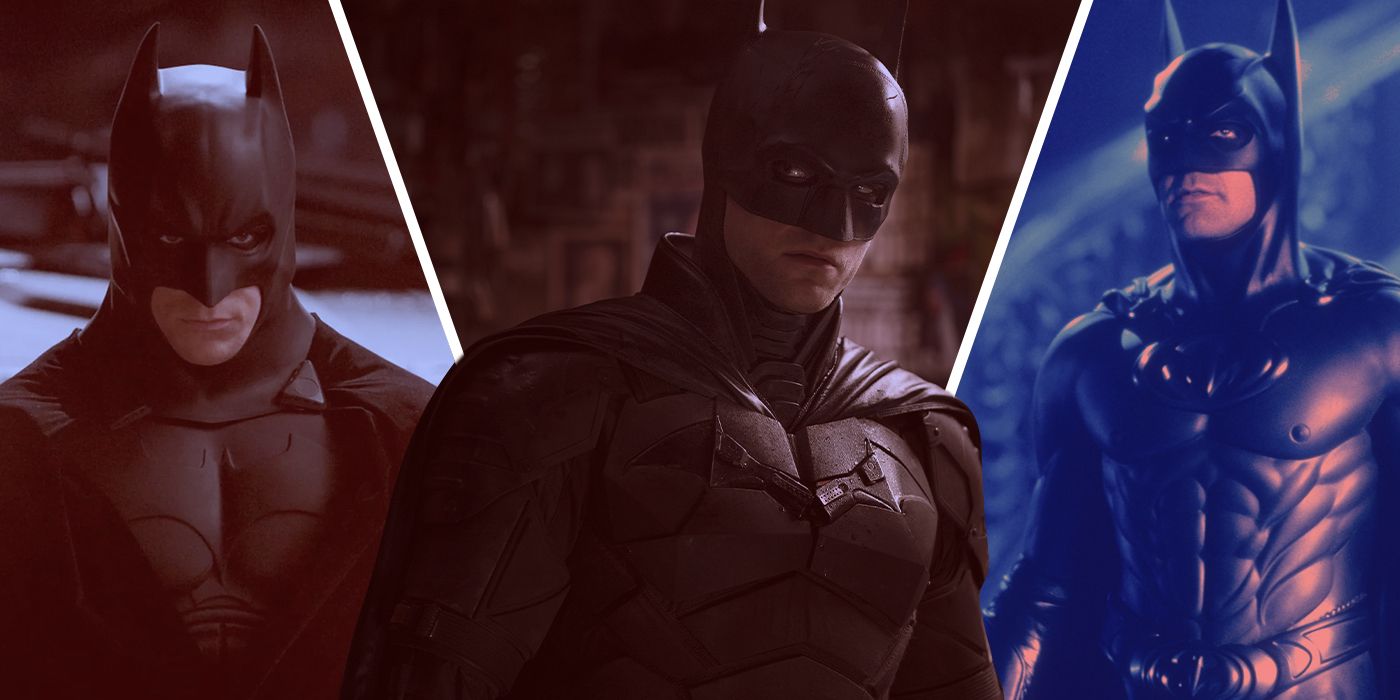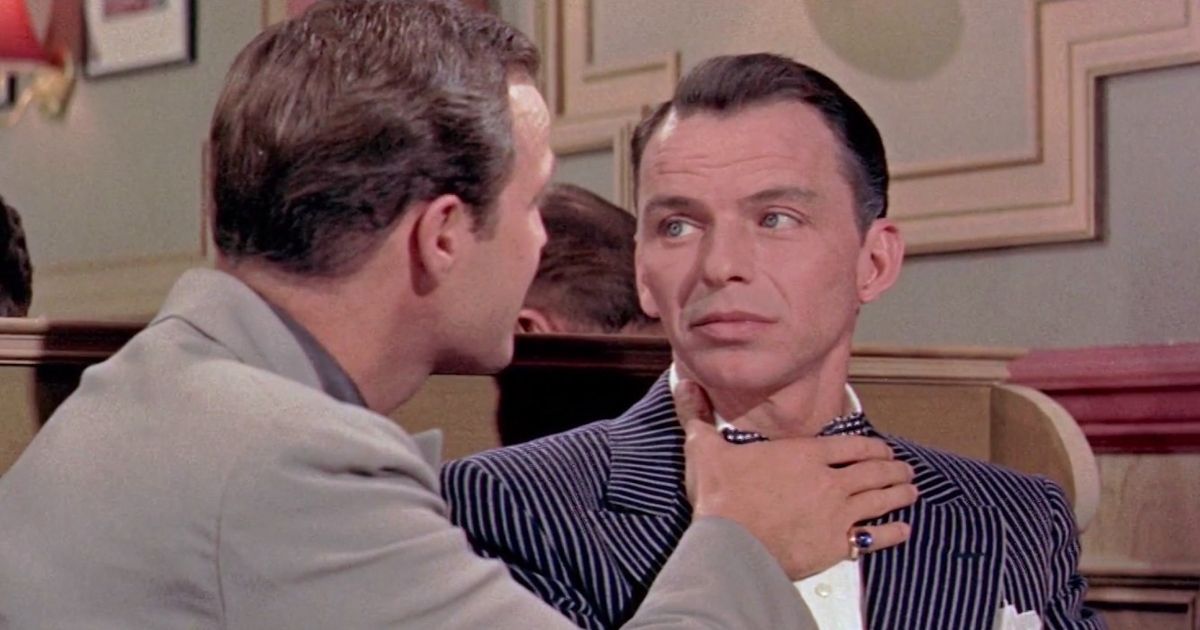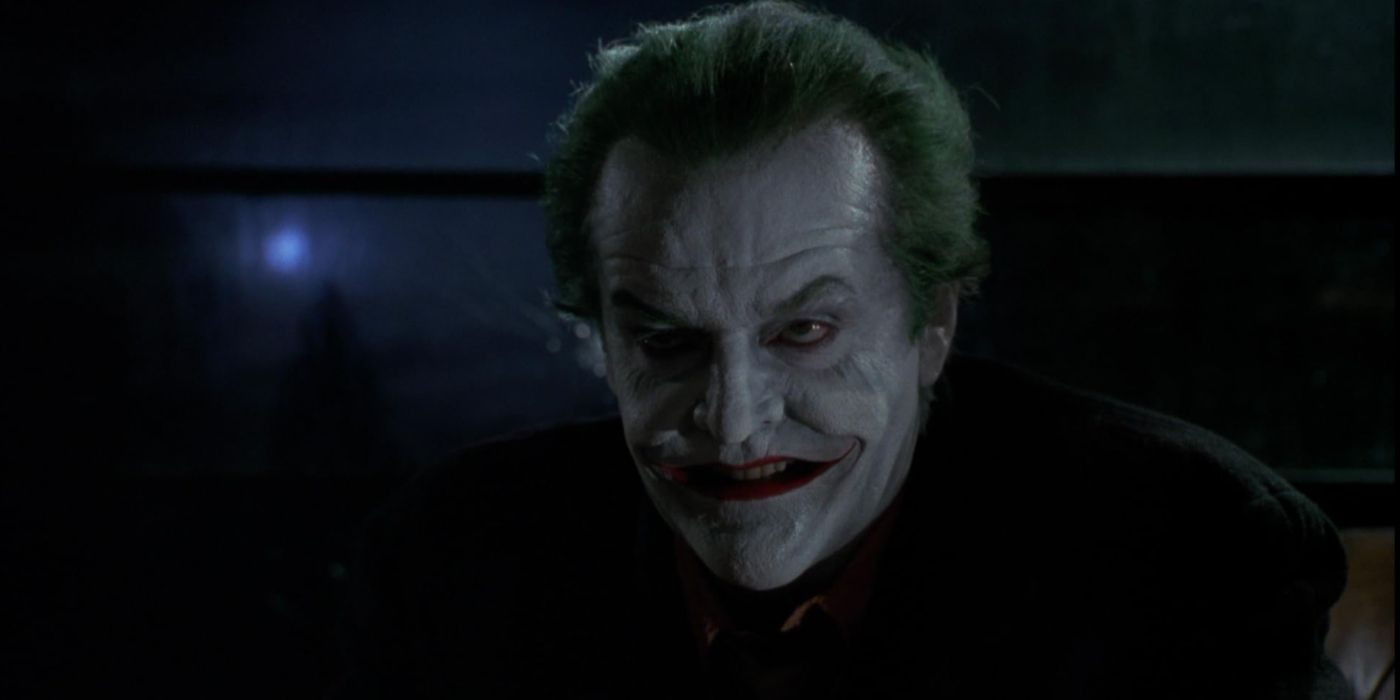Summary
- Singer-turned-actor Frank Sinatra badly wanted to play The Joker on Batman to showcase his acting chops, recognizing the artistic value of the role.
- He was right to be interested in the role, the outwardly trivial Joker character luring in top-tier actors for its complexity and prestige in the coming decades.
- Actors like Heath Ledger and Joaquin Phoenix redefined the gangster, turning a comic villain into a true icon, no longer needing Batman to flesh out the character.
What do Heath Ledger, Mark Hamill, and Frank Sinatra have in common? Not much, but had the Batman TV show producers taken Ol’ Blue Eyes up on his offer, we might have witnessed one of the weirdest transformations in pop culture history. Sadly, we’ll never get to find out how Frank Sinatra got those scars.
We can merely fantasize about what the singer would have looked like on the American Broadcasting Company serial, and whether he’d toss himself into the performance and sufficiently ham it up like Burgess Meredith did with the Penguin, or phone it in. Playing along with the corniest gags and plot lines on TV took a level of self-deprecation and devotion to the joke that tested even the most experienced actors. One thing is clear, Sinatra did recognize the artistic value of the role, which, in many ways, makes him a visionary actor, wisely picking the one role that didn’t require chafing, skin-tight spandex.
You might ask why, but as we’ve seen unfold over the last forty years, Batman’s most iconic foe is also the most cinematic comic character ever made, Jared Leto learning the hard way that there are monstrous expectations associated with the character. From the first incarnation, the role required just the right performer to wrangle all the mannerisms and emotional outbursts, Jack Nicholson invokes the impression that there is something under the gaudy clothing and clown smirk. After Jack Nicholson, villain actors aped his performance for years until Ledger redefined it, then Joaquin Phoenix and writers Todd Phillips & Scott Silvers revitalized the stagnant character once more.
The comic book film genre has long bolstered a limp Hollywood. That old magic may be gone, but you sure can’t fault The Joker. The power of the character is so great that it can turn the frat-comedy guy who made The Hangover movies into a respected director. Closer examination of the character and his history on screen illustrates how The Joker gig became the most coveted piece of Oscar bait.
Every Live-Action Joker:
|
Actor |
Project |
Year |
|
Cesar Romero |
Batman TV Series |
1966 |
|
Jack Nicholson |
Tim Burton’s Batman |
1989 |
|
Roger Stoneburner |
Birds of Prey TV Series |
2002 |
|
Heath Ledger |
The Dark Knight |
2008 |
|
Jared Leto |
Suicide Squad/Zack Snyder’s Justice League |
2016/2021 |
|
Cameron Monaghan |
Gotham TV Series |
2014 |
|
Joaquin Phoenix |
Joker |
2019 |
|
Nathan Dashwood |
Batwoman |
2019 |
|
Barry Keoghan |
The Batman |
2021 |
Same Bat-Time, Same Bat-Channel
No one could have predicted the success of the 1966 ABC show Batman. Eager to jump on the bandwagon, actors deluged the network and the show’s producer, William Dozier. Sinatra had his heart set on playing the buffoonish criminal. Throughout the series’ run, numerous singers landed roles on the show, including Liberace, bandleader Rudy Vallee, and Eartha Kitt. If anyone could convince the producers to see things his way, it was a guy with mafia goons on his rolodex, right? Is there any truth to the urban legend?
Absolutely, at least according to Robin actor Burt Ward. “From what I understand, Frank Sinatra was very upset because he couldn’t play The Joker,” he said, so clearly Sinatra didn’t call in any special favors from his friends when rejected. One wonders why he didn’t settle for a smaller part, but it was Sinatra, and playing anything short of the marquee villain would probably have been too demeaning for him to take. That in itself is not a remarkable feat. Competition to land a spot on the hit show was stiff. Most celebrities settled for a five-second cameo in the ongoing window gag.
A possible alternate explanation is money, not lack of confidence in Frankie’s skills. At this point, he was a respected actor. Dozier wasn’t the final voice in the casting process, he was at the whim of the network bean counters. ABC was so cheap that they dumped the original Riddler in favor of a more affordable replacement in the second season in 1967. Evidence can be found on Martin Grams’ blog, which unearthed ABC documentation listing the “talent fees” for individual stars and cameos, lending credence to the idea ABC simply couldn’t afford Sinatra.
Ceasear Romero would keep his job, eventually playing the same part in the subsequent movie. But, don’t feel bad for Sinatra. His career was set with or without the snub.
The Jack Nicholson Effect
It’s no coincidence that this comic book character has become such an attractive role for actors to make their bones. The pages of the comics are too limited to contain him. Sinatra had been trying to cement his identity as more than just an aging crooner, with a string of critical duds since his classic The Manchurian Candidate. This was the answer to connect with a new audience.
The Joker is a less brooding, more theatrical character that works better on screen. As the tale goes, the creators of the character, Bob Kane, Bill Finger, and Jerry Robinson, drew substantial influence for The Joker’s imagery and iconic smile from the silent film The Man Who Laughs, the 1928 Universal semi-silent movie starring a disfigured clown-figure played by German actor Conrad Veidt.
However, co-creator Jerry Robinson vehemently contested this explanation, saying he was influenced by the artwork of Aubrey Beardsley. The true origins of the character remain unclear, but he did acknowledge the obvious similarities to Veidt’s general appearance. In his book, he remarked that The Joker’s invention was out of practicality, the criminal mastermind needing to be a histrionic, silly character to contrast with the dour Batman:
… the ultimate worthy adversary should have no superpowers… Some argued that an overly striking villain would detract from the hero, but I disagreed. Heroes can be dull because they must always be good. With their essential flaws, villains are more interesting.
After the Superman franchise nose-dived, superhero films were box-office poison and deemed a crass joke to film execs by the mid-’80s. Luckily, Warner Brothers didn’t get discouraged and put their next popular superhero back into action. Sinatra missed his last chance, now way too old to pull it off. In 1989, Jack Nicholson sparked a renaissance of the genre and especially the craft of comic villainy thanks to his interpretation.
For a decade after, every Batman actor, whether Tommy Lee Jones, Danny DeVito, or Jim Carey, pantomimed Nicholson’s homicidal clown shtick. Though all accomplished, skilled performers in their own right, no one had the nerve to attempt anything but the established Joker template. As The Joker went, so too did the fortunes of the Batman franchise. While Mark Hamill perfected the animated version of The Joker, the live-action films floundered for a decade waiting for someone to breathe some life into the critical role and series.

Only One Cinematic Batman Is Comic Accurate (And It’s Not Who You Think)
Batman’s most sacred rule in the comics is no killing, but for live-action films, only one can be said to uphold the rule entirely.
From Payday to Oscar Bait
If it seems odd why an already massively famous actor would pine to play a deranged goofball, recent history has shown exactly why Sinatra saw so much potential in the role. Actors dream of getting lost in a character, making it their own. The Joker’s most brilliant scheme yet might well be to humiliate Batman during awards season, because based on the current tally, he’s up two-nil on the Academy Awards scoreboard.
As Heath Ledger demonstrated in The Dark Knight, there’s much more material and leeway there than playing Bruce Wayne, with The Caped Crusader changing minimally over a dozen movies personality-wise. This explains why actors are now looking at the comic character, and the entire pantheon of villains in general, with a fresh perspective, not just as a lucrative paycheck. In a generation, we’ve turned a vaguely defined comic-book antagonist into the next Othello. If you’re really desperate to get some credibility as a thespian, young actors take note. Whip out the white grease paint and green hair dye.

10 Quintessential Frank Sinatra Movies
Sinatra displayed the power of his acting chops in dozens of movies throughout his career.
Quick to decipher what the character meant in terms of acting prestige, Jared Leto tried to crack the role with a lot of hype and antics, but to limited success. Finally, Joaquin Phoenix made good on the character’s true potential in Todd Phillips’ Joker, earning his first Oscar. Interestingly, it was the second Academy Award for that specific role, after Ledger’s posthumous Best Supporting Actor in 2008.
Although the two performances have little in common in terms of motivation or backstory — something that differentiates it from the Bruce Wayne-Batman character. For those keeping track, that’s a record that matches the double Oscars won by the two actors who won for portraying Don Vito Corleone (Robert De Niro and Marlon Brando). It’s safe to say, that at this point, The Joker has solidified his persona in pop culture, each actor doing it their way.
The complete Batman series is available to purchase from Apple TV, but we’ll have to wait for AI deepfakes to ever see Sinatra in the signature red and white clown paint.




